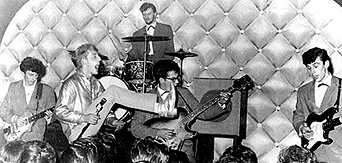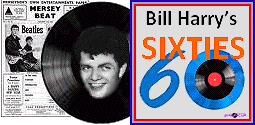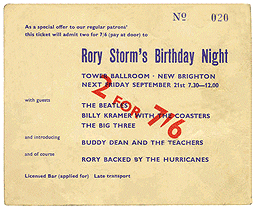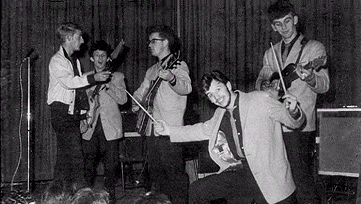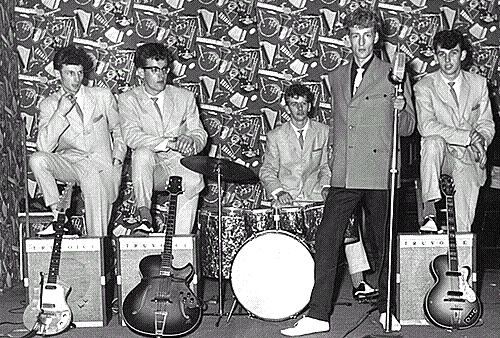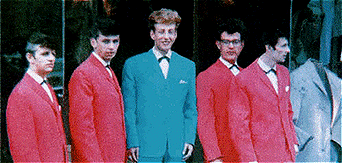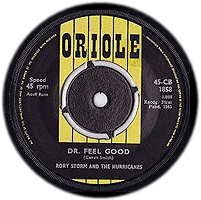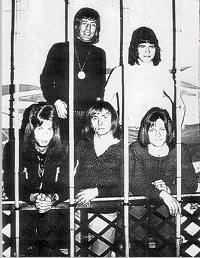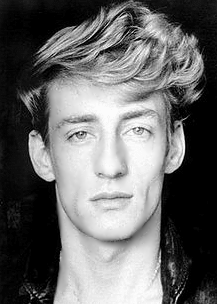It was during this eight-week season, on Saturday October 18th 1960,
that the recording session took place at the Akustik Studio with Lu
Walters backed by John Lennon, George Harrison, Paul McCartney and Ringo
Starr (performing together for the very first time). Three of Wally’s
ballads were recorded: ‘Fever,’ ‘September Song’ and ‘Summertime.’ Rory
also sang at the Top Ten, accompanied by Tony Sheridan. Rory Storm &
The Hurricanes became the star band on the first Beat night at the Orrell
Park Ballroom in March 1961 and they began their second Butlin’s season
at Skegness in Lincolnshire, 161 miles from Liverpool.
At one time Ringo considered joining the Seniors but, on 30th December
1961, he left for Germany to back Tony Sheridan at the Top Ten Club
in Hamburg, enticed by the lure of a large fee, a flat and the use of
a car. However, he found Sheridan’s eccentric style of performing too
hard to cope with (he’d often change songs in the middle of a performance
without telling his backing band) and returned to The Hurricanes. While
he was absent from the group, Derek Fell from the Blackpool group The
Executioners replaced him.
The band also toured American bases in France and appeared at a club
in Marbella, Spain, before their third season at Butlin’s, again in
Skegness. One of their bookings was for a one-month season at an American
base in Fontenet, when they had to be accompanied by a female vocalist.
They took Vicki Woods, who’d appeared regularly in Liverpool clubs in
a double act with her mother. The group performed from seven to ten
forty-five each night, with four 15-minute breaks. It was also during
this year that Lou left the group for a while when he joined The Seniors.
During the Skegness season Ringo received a letter from Kingsize Taylor
offering him £20 a week if he would join them in Germany as a replacement
for Dave Lovelady, who was leaving the group to complete his studies.
Ringo agreed. Then, one day, John Lennon and Paul McCartney turned up
at the camp and offered Ringo £25 a week if he’d join them. The extra
£5 sealed it and Ringo agreed to become a Beatle as from August 1962.
Johnny Guitar says that John and Paul turned up at ten one morning and
knocked on their caravan door, saying they wanted Ringo to join them.
Rory told them that The Hurricanes couldn’t work without a drummer and
they hadn’t finished their season. Paul told him that Brian Epstein
said that they could have Pete Best. Rory went to Liverpool to see him
but Pete Best was too upset. Rory then returned to Skegness and used
relief drummers, one of whom, Anthony Ashdown, was an actor. |
|

